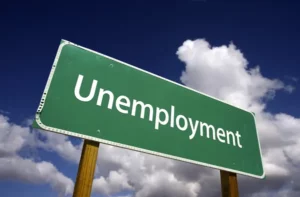Unemployment rate rises in April

The seasonally adjusted unemployment rate rose by 0.1 percentage point (rounded) to 3.7 per cent in April, according to data released last week by the Australian Bureau of Statistics (ABS).
Bjorn Jarvis, ABS head of labour statistics, said: “with employment dropping by around 4,000 people and the number of unemployed increasing by 18,000 people, the unemployment rate rose to 3.7 per cent.”
“The small fall in employment followed an average monthly increase of around 39,000 people during the first quarter of this year.”
Similarly, the employment-to-population ratio fell 0.2 percentage points to 64.2 per cent and the participation rate decreased 0.1 percentage point to 66.7 per cent.
“Even with these falls, both indicators were still well above pre-COVID-19 pandemic levels and close to their historical highs in 2022,” Mr Jarvis said.
Hours worked
Seasonally adjusted monthly hours worked increased by 2.6 per cent in April.
“This was because fewer people than usual worked reduced hours over the Easter period,” Mr Jarvis said.
“The last time Easter and the survey period aligned like this was in 2015, when around 60 per cent of employed people worked fewer hours than usual. This Easter it was only around 55 per cent of employed people.
“This may reflect more people taking their leave earlier or later than usual, or that some people were unable to, given the high number of vacancies that we’re still seeing employers reporting.”
“The ongoing strength in hours worked over the past six months shows the demand for labour, to some extent, is being met by people working more hours,” Mr Jarvis said.
Underemployment and underutilisation
The underemployment rate fell 0.1 percentage point to 6.1 per cent (seasonally adjusted), following a 0.4 percentage point increase in March.
“The underemployment rate is still low in historic terms, around 2.6 percentage points lower than before the pandemic, and underpinned by faster growth in hours worked than employment,” Mr Jarvis said.
The underutilisation rate, which combines the unemployment and underemployment rates, rose slightly to 9.8 per cent, and remained 4.2 percentage points lower than in March 2020.
Underlying trend data
The latest monthly percentage increase in trend employment was slightly higher than the monthly average increase for the 20 years before the pandemic.
“The trend data continues to show how much stronger the growth in hours worked has been, relative to employment,” Mr Jarvis said.
“In trend terms, hours worked increased around 0.4 per cent, which is around double its longer-term average of 0.2 per cent and around double the 0.2 per cent growth rate in employment.”
The trend unemployment rate remained at 3.6 per cent for the third consecutive month, after earlier data was revised up slightly. The trend underemployment rate remained at 6.1 per cent for the fourth straight month.
The trend participation rate remained steady at 66.7 per cent for the past year.
The trend employment to population ratio fell less than 0.1 percentage point to 64.2 per cent.
“In trend terms, the strong growth in hours worked, the high employment-to-population ratio and participation rate, along with the low unemployment and underemployment rates, all still point to a tight labour market,” Mr Jarvis said.
Further information, including regional labour market information, will be available in the upcoming April 2023 issue of Labour Force, Australia, Detailed, due for release on Thursday 25 May 2023.
The ABS would like to thank Australians for their continued support in responding to our surveys.
Media notes
- The April survey reference period was from 2 April to 15 April 2023.
- The May survey reference period is from 30 April to 13 May 2023.
- To learn more about our different labour measures, their purpose and how to use them, see our new Guide to labour statistics. It provides summary information on labour market topics including Industry employment data.
- When reporting ABS data you must attribute the Australian Bureau of Statistics (or the ABS) as the source.
- For media requests and interviews, contact the ABS Media Team via media@abs.gov.au (8.30am-5pm Mon-Fri).
- Subscribe to our media release notification service to get notified of ABS media releases or publications upon their release.
Article Credited to ABS – Media Release (18/05/2023)
We would appreciate your support by following us on Facebook, Linkedin, Instagram-Oracle and Instagram-Kountable for more great tips, support and the latest tax news and headlines!
Oracle Accounting & Wealth is located at Suite 31, 89-97 Jones Street ULTIMO NSW 2007. Phone: 02-9715 2977
Liability limited by a Scheme approved under Professional Standards Legislation.
Disclaimer
The information in this newsletter / factsheet is factual but general in nature. It should not and is not to be construed as advice at any level whatsoever. Because it contains general information that has not been tailored to your personal circumstances it may not be suitable information for you. You must always seek personal financial or taxation advice prior to acting on this information. Further, as many of the comments in this newsletter / factsheet are general in nature, anyone intending to apply the information to practical circumstances should seek professional advice to independently verify their interpretation and the information’s applicability to their particular circumstances.
